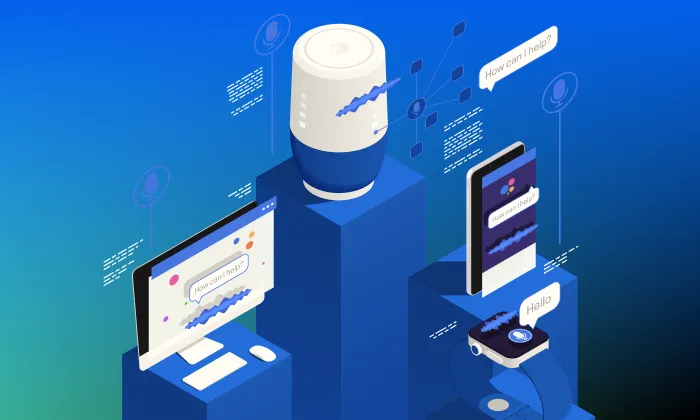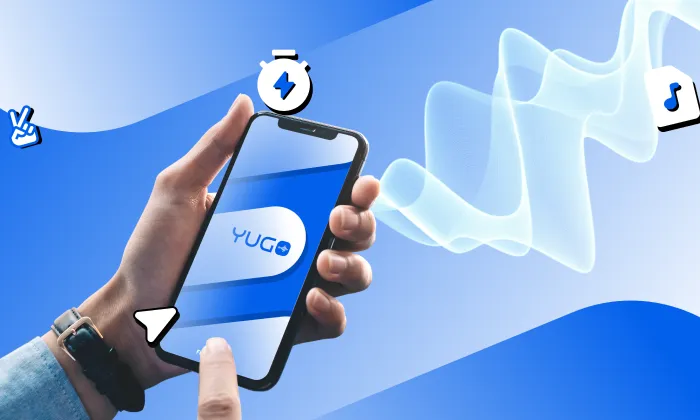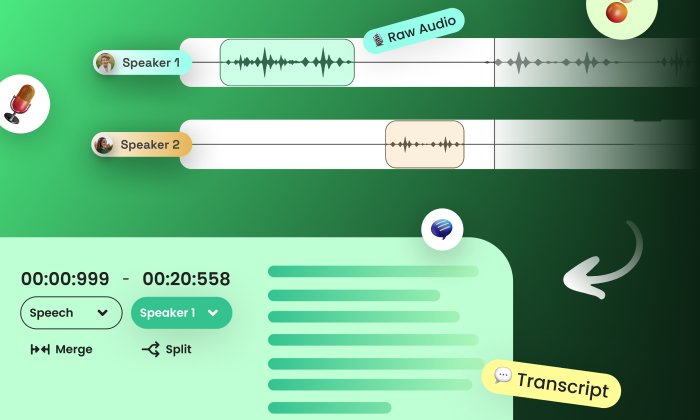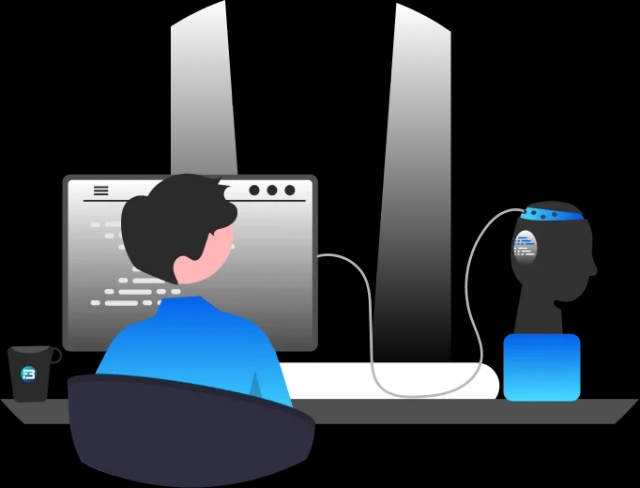When it comes to business, customer service is an essential aspect that can make or break the relationship between a company and its customers. In fact, studies have shown that a staggering 40 percent of customers in the United States stopped doing business with a company due to poor customer service experiences.
We've all experienced the frustration of calling a contact center, enduring long queues, and navigating through annoying automated phone menus. It's a truly exasperating experience that lacks the human touch and empathy we crave. After all, who wants to listen to irrelevant options when 88 percent of customers actually prefer voice calls with a live agent?
Yet, we must acknowledge the challenges faced by call centers. On average, they handle thousands of calls each day, making it nearly impossible for human agents to consistently provide high-value interactions to every customer. That's where innovative AI-enabled technologies step in, offering solutions such as agent assist, speech analytics, predictive analytics, and performance analytics. These technologies aim to revolutionize the call center and customer service space, providing more efficient and personalized experiences.
But what powers these groundbreaking AI-enabled technologies? The answer lies in speech data—the fuel that drives these advancements and reshapes the customer service landscape. In this captivating blog post, we embark on a journey to explore how speech data acts as a gold mine for these transformative technologies.
Before that, let us quickly understand what we mean by call center speech data.
What is Call Center Speech Data?
Call center speech data refers to the recorded conversations or audio interactions between customers and call center agents during customer service or support calls. It includes all the verbal communication, such as questions, inquiries, complaints, and problem-solving discussions, that takes place during these interactions.
Companies generally record and store the audio recording of your inbound or outbound conversation with the customer executive. These audio conversations are a wealth of information, such as customer behavior, preferences, sentiment, and overall customer experiences.
The collection of call center conversations, along with their transcripts, is known as a call center speech dataset. This dataset encompasses a wide range of characteristics, including various intents, outcomes, languages, accents, speaker genders, and ages. It can be utilized to train AI-powered technologies, enabling the automation of processes and extracting valuable real-time insights from these conversations and beyond.
Let me prove that to you in the upcoming section.
Why Call Center Speech Dataset is Valuable?
1) Valuable Consumer Insights
Every company aims to gain a deep understanding of their customers' wants and problems in order to keep them satisfied, don't they? Call center speech data presents a valuable asset for precisely gathering that information.
Think about a time when you were frustrated with delivery delays and vented your annoyance to a customer service representative. Naturally, you would prefer to prevent such issues in the future, correct? Call center recordings provide companies with the opportunity to examine the specific needs and concerns of their customers.
By utilizing advanced technologies like Automatic Speech Recognition (ASR) and Natural Language Processing (NLP), companies can discover practical and useful insights from the conversations that occur in call centers. These tools enable the analysis of large volumes of call center data, empowering companies to extract the most valuable insights.
Customer service is a multifaceted responsibility that necessitates skilled agents who can handle it proficiently. To ensure that your human workforce meets your standards, it is crucial for companies to analyze the conversations between customers and agents.
By examining these interactions, businesses can gain valuable insights into the agents' performance and pinpoint areas that require improvement. AI technologies can evaluate various factors, such as call duration, agents' tone of speech, language proficiency, and adherence to scripts or guidelines.
This data can then be used to provide targeted training and coaching to agents, enabling them to enhance their communication skills, handle challenging situations more effectively, and deliver exceptional customer service.
Furthermore, real-time agent assist tools, powered by speech datasets, can provide agents with instant suggestions and recommendations for the optimal course of action during live interactions. This not only leads to faster resolution times but also enhances customer satisfaction.
By leveraging call center speech data to enhance agent performance, companies not only improve the overall customer experience but also drive operational efficiency and productivity within the call center environment.
3) Predictive Analysis
Every organization strives to maintain a competitive edge, which can only be achieved by consistently delivering what the ideal customer desires. To comprehend these upcoming trends, it is essential to analyze customer interactions.
By examining speech data from call centers, businesses can predict customer behavior, anticipate their requirements, and forecast future trends. This allows call centers to allocate resources more effectively, identify potential problems before they escalate, and proactively address customer concerns.
Utilizing AI technologies trained on speech datasets, organizations can analyze consumer interactions in real time, gaining comprehensive insights into customer expectations and demands.
4) Customer Sentiment Tracking
Understanding the emotions of customers during their interactions is crucial for businesses. In fact, every business is now focused on ensuring customer satisfaction. Customer sentiment serves as a gauge for evaluating the effectiveness of a business's efforts.
When customers feel frustrated or dissatisfied during their interactions with agents, it becomes an important aspect to assess. Call center speech data contains valuable information about customer sentiment. By analyzing this data, businesses can uncover significant insights and identify areas for improvement.
AI-powered tools, specifically trained on call center speech datasets, can perform sentiment analysis on each customer interaction. These tools provide an overview of the overall customer sentiment and the reasons behind it, offering valuable insights for businesses to enhance their services.
In order to outperform competitors and consistently provide the best service to customers, businesses must regularly make a multitude of decisions. Each decision carries a certain cost and has the potential to either enhance or damage the company's reputation.
The key to addressing this challenge lies in making well-informed decisions. When decisions are based on data and customer requirements, they have the power to propel the organization forward. Call center data is a valuable resource that can support companies in making timely and knowledgeable decisions.
By utilizing AI-powered tools, businesses can effectively extract insights from customer interactions, enabling them to make critical decisions with confidence.
How to Make the Best Use of Speech Data
Based on our previous discussion, it is clear that organizations can gain insights into customer needs through careful analysis of call center data. However, manually reviewing and extracting analytics from this data is extremely challenging due to the large volume of incoming calls.
These customer conversations are primarily conducted verbally and are recorded and stored in audio format. It is important to note that audio data is considered "dark data" because it cannot be directly searched or provide immediate insights.
The most effective solution in this case is to transcribe the audio data using an automatic speech recognition (ASR) model. By leveraging natural language processing (NLP), we can then analyze and extract meaningful insights from the transcribed text.
Enterprises are currently transcribing a mere fraction, ranging from 5% to 10%, of their customer conversations. Just ponder the untapped wealth that remains unexplored and overlooked.
But the call center speech data can be highly industry-specific. Each industry has its own unique terminology, jargon, and procedures. Consequently, a general Automatic Speech Recognition (ASR) model trained on generic conversations may not perform well when applied to industry-specific data. To address this issue, we have two options: either develop an ASR model tailored to the specific industry or fine-tune a pre-trained model using industry-specific call center speech datasets.
However, the ability to convert audio data into text provides us with tremendous power to analyze the data. It transforms previously inaccessible "dark data" into a source of valuable insights. By accurately understanding the intentions and sentiments expressed by users, we can identify specific words and sentences used, as well as the frequency of their occurrence in any given conversation. Additionally, through analysis of the call transcript, we can extract keywords that are specifically related to the products or services discussed.
In this analysis process, natural language processing (NLP) plays a crucial role. By leveraging its capabilities to comprehend text data, including the call transcripts, we can extract meaningful insights, analyze customer behavior, and even perform predictive analysis.
Experience Best of Both Worlds!
I'm confident that you're now fully aware of the immense value hidden within call center speech data, which contains valuable customer insights and vital business information. By conducting meticulous analysis, you can gain a competitive advantage over others. Leveraging AI-powered technology is essential to efficiently processing the vast volume of data and extracting the critical information you need.
In order to develop powerful Automatic Speech Recognition (ASR) models, a substantial amount of speech data is required. That's where we come in to assist you. At FutureBeeAI, we provide you with the perfect solution, whether you need call center speech datasets or transcription and labeling services.
Discover our comprehensive collection of pre-existing call center speech datasets, available in over 40 languages. These datasets cover various industries, including BFSI, Healthcare, Retail and Ecommerce, Delivery and Logistics, Real Estate, and more.
Get in touch with us today and elevate your customer service innovation with AI capabilities to new heights.






